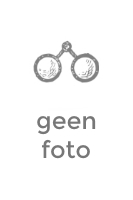Alabaster Sculpture in Europe (1300-1650) - Marjan Debaene

KORTE INHOUD
Alabaster was a popular material in European sculpture, especially from the fourteenth to the seventeenth century. Its relative availability and easy to sculpt characteristic made it a highly suitable material for both large monuments and small objects, for mass production and individual works, from England to Spain and France to the Netherlands, Germany and Poland. This material has been the subject of multidisciplinary research in various European countries for several decades. The research combines material analyses with historical and art-historical approaches. This publication, made for the occasion of the large exhibition on the theme at M Leuven opening on October 14th, brings together all renown specialists on the material and sheds light on the many facets of alabaster, such as its physical and chemical properties as well as its translucency, its whiteness, its softness, and its beautiful sheen, all of which made it a popular material used in different types of sculpture from the middle ages to the b...
Details
2022Uitgever: Brepols Publishers312 paginasTaal: EngelsISBN-10: 1912554925ISBN-13: 9781912554928Koop dit boek tweedehands
bij volgende verkopers

Alabaster Sculpture in Europe 1300-1650 (Studies in Medieval and Early Renaissance Art History) Softcover, 300 x 240 mm, 312 pp, numerous color illustrations, in very good condition; Book condition: As New; Binding: Soft cover [Auteur: Debaene, Marjan] [Taal: en] [Uitgever: Harvey Miller Pub] [Jaar: 2022] [Titel: Alabaster Sculpture in Europe 1300-1650 (Studies in Medieval and Early Renaissance Art History)]

Stel vraag Softcover
In short, everyone involved in creating this catalogue and the exhibition it records deserves praise. The volume covers a vast terrain, helpfully summarizing the current state of knowledge on a great many objects and providing a road map for further study by scholars and students of the material (and indeed of ?materiality? writ large). In doing so, the catalogue provides a stellar example of the benefits of stepping outside of the intellectual taxonomies that so often constrain scholarship: our assumptions...

